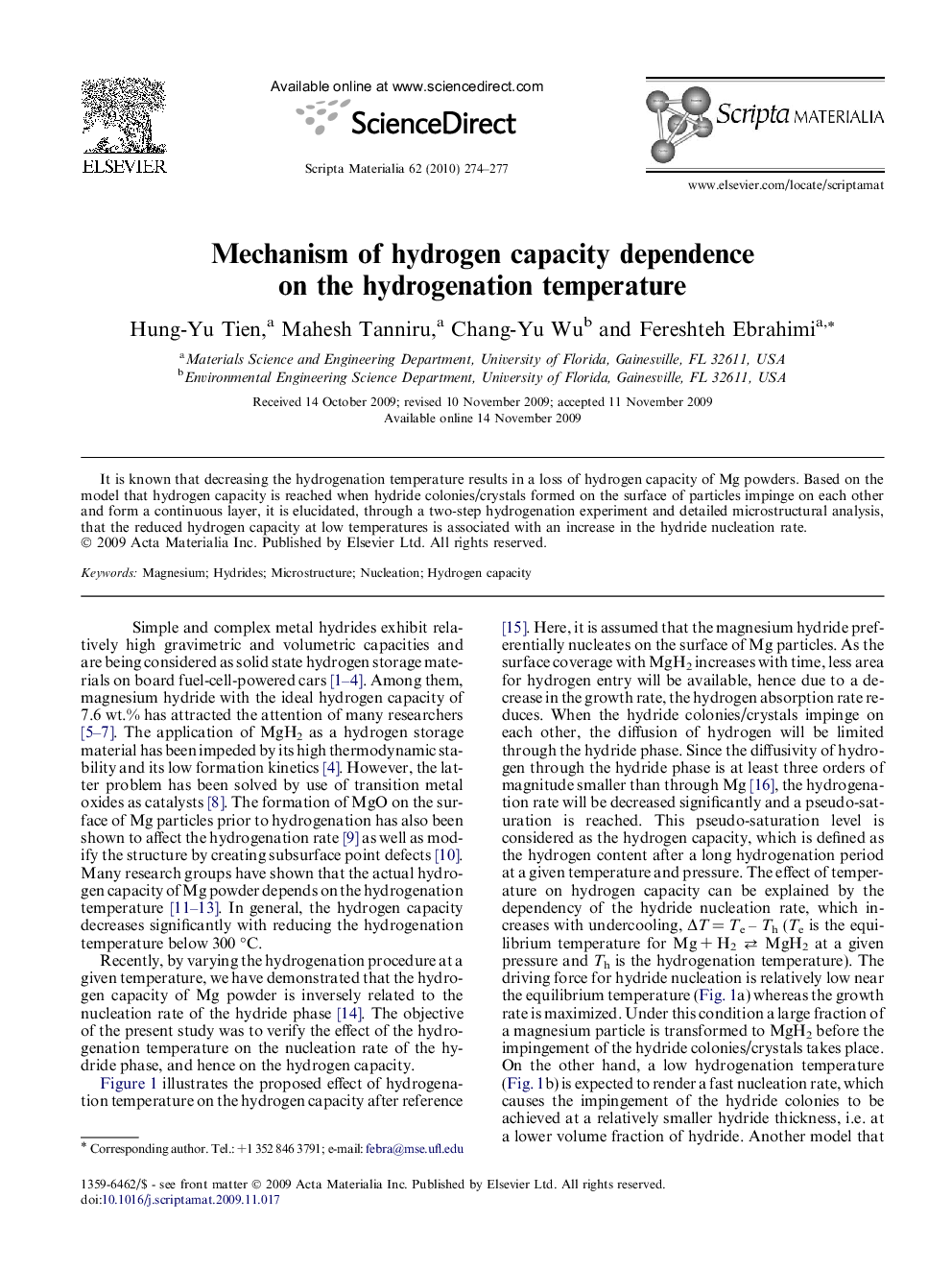| Article ID | Journal | Published Year | Pages | File Type |
|---|---|---|---|---|
| 1500868 | Scripta Materialia | 2010 | 4 Pages |
Abstract
It is known that decreasing the hydrogenation temperature results in a loss of hydrogen capacity of Mg powders. Based on the model that hydrogen capacity is reached when hydride colonies/crystals formed on the surface of particles impinge on each other and form a continuous layer, it is elucidated, through a two-step hydrogenation experiment and detailed microstructural analysis, that the reduced hydrogen capacity at low temperatures is associated with an increase in the hydride nucleation rate.
Related Topics
Physical Sciences and Engineering
Materials Science
Ceramics and Composites
Authors
Hung-Yu Tien, Mahesh Tanniru, Chang-Yu Wu, Fereshteh Ebrahimi,
